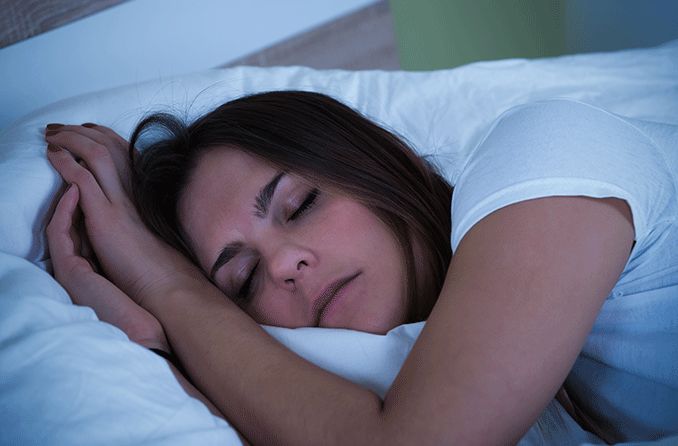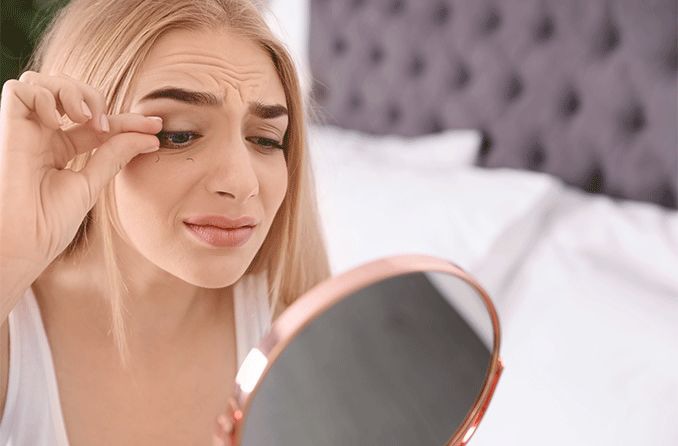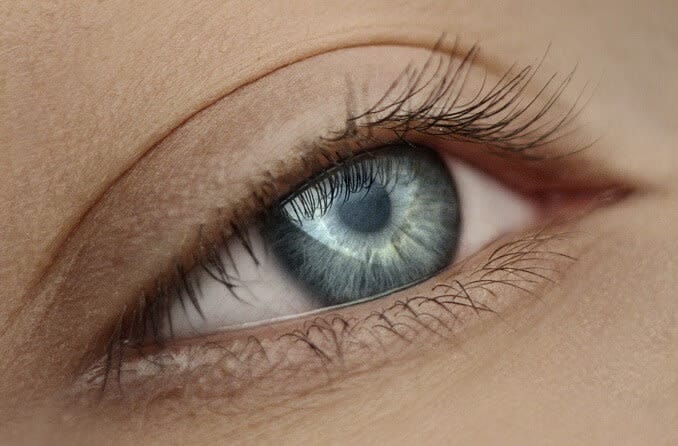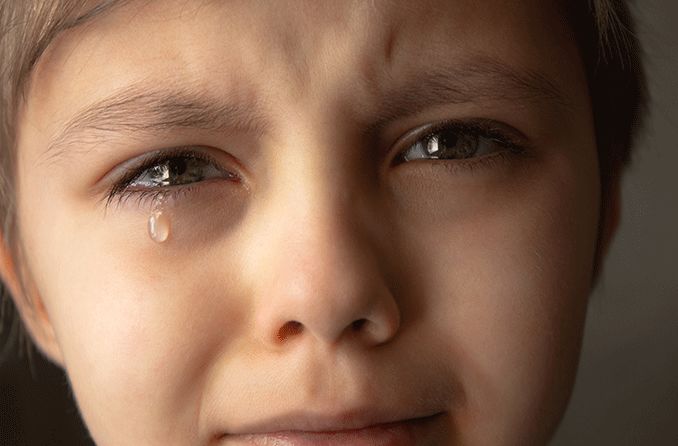What do your eyes do while you’re sleeping?
While you’re asleep, you repeatedly cycle through two main types of sleep: non-rapid eye movement (non-REM) and rapid eye movement (REM). During non-REM sleep, your eye movements slow down and eventually stop. In REM sleep, your eyes remain closed but move rapidly. Dreaming happens during REM sleep.
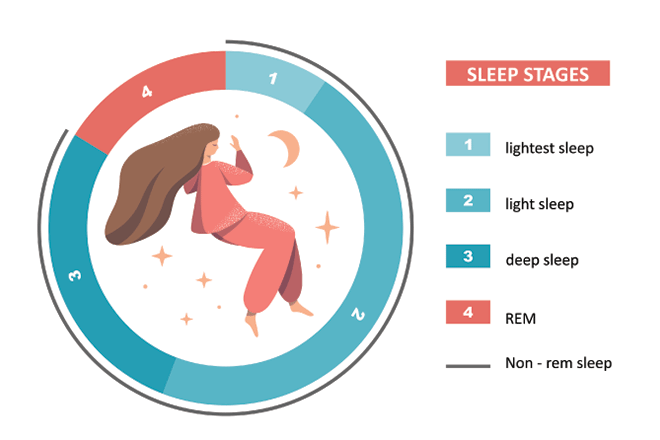
Cycles of non-REM sleep
There are three stages of non-REM sleep:
Stage one – between being awake and falling asleep
Stage two – light sleep when your body temperature drops and your heart rate and breathing regulate
Stages three – deep sleep
What happens during REM sleep
Your eyes and body are affected during REM sleep:
You experience rapid eye movements known as saccades.
Your breath rate speeds up.
Your body becomes temporarily paralyzed while you’re dreaming.
Your brain activity increases, and your brain waves are similar to those when you’re awake.
Experts are divided on why the eyes move as they do during REM sleep. Some research shows that these rapid eye movements enable people to change scenes while dreaming. Other studies suggest that the left and right eyes move separately.
Do your pupils change size during sleep?
In addition to eye movement during REM sleep, pupils also change size depending on the stage of sleep. During deep non-REM sleep, your parasympathetic nervous system, which conserves energy while you rest, signals your pupils to constrict or become smaller. The deeper your sleep, the smaller your pupils get. This may be to help stabilize your sleep cycles by limiting visual stimuli so your brain doesn’t think it’s time to wake up.
Do your eyes roll back when you sleep?
When you are falling asleep, your eyes may slowly roll back. As your sleep becomes deeper, eye movements stop for a while. Eye movement starts again after you have been asleep for one or two hours and enter REM sleep.
Do your eyes twitch during sleep?
An eyelid twitch is an involuntary, uncontrollable eyelid spasm. Most of the time it only lasts a few minutes, but sometimes you can have an eyelid twitch for days or longer. The symptoms of eye twitching often disappear while you’re asleep.
The exact cause of eye twitching is not known but some things that may cause it include:
Stress
Too much caffeine
Dry or irritated eyes
Eye strain
Certain medications
What happens to your eyes during sleep paralysis?
Sleep paralysis may sound scary, but it’s a relatively common condition, with a number of people experiencing it at least once during their life. It can happen as you’re shifting between REM sleep and non-REM sleep.
When you’re in REM sleep, your muscles don’t move. This is known as muscle atonia, and helps ensure that your body doesn’t move during REM sleep so you don’t hurt yourself while you’re dreaming.
Sleep paralysis lasts from a few seconds up to several minutes. During this time, you can breathe and open and close your eyes, but your body is still in REM mode, which can make you feel like you’re paralyzed.
Why do your eyes close during sleep?
Your eyelids — specifically closed eyelids — are an important part of sleep:
Eyelids are a protective barrier and keep debris from getting in the eyes.
Eyelids lubricate the eyes so they don’t dry out.
Closing the eyes blocks light, a critical part of regulating the body’s internal 24-hour clock. When the body perceives darkness, melatonin is produced, telling the body it’s time to sleep.
Can you sleep with your eyes open?
Some people (about 5% of the population) sleep with their eyes open. This is called nocturnal lagophthalmos (la-guhp-THAL-mowz). Reasons you may sleep with your eyes open include:
Proptosis of the eyes (bulging eyeball) – The eyelids may not be able to fully cover bulging eyeballs. This is also known as exophthalmos.
Short or weak eyelids – The eyelids may not fully close if the eyelids are too short or have decreased muscle tone.
Scarring – Eyelid function can be limited by diseases, physical trauma and chemical burns.
Nerve problems – Facial nerve problems such as Bell’s palsy can prevent the eyelids from functioning properly.
Sedatives – Nocturnal lagophthalmos can sometimes be caused by too much alcohol and sedatives such as some types of sleeping pills.
Thyroid eye disease – This is a condition in which the soft tissues and muscles around the eyes become swollen and inflamed, causing exophthalmos. It’s often caused by an underactive thyroid gland.
Infections – Infections are a less common cause. Some that may result in nocturnal lagophthalmos are Lyme disease, mumps, chickenpox, polio, Hansen’s disease (leprosy), diphtheria and botulism.
Eyelashes – Very thick upper or lower eyelashes can keep your eyes open during sleep.
Cosmetic procedures – Certain cosmetic procedures such as Botox injections, eyelid-tightening surgery and fat removal around the eyes can affect the eyelids’ height and muscle tone.
The side effects of nocturnal lagophthalmos are usually more troublesome in the morning and may include:
Dry eyes
Sore or painful eyes
Red eyes
Watery eyes
Blurry vision
Sleeping with your eyes open doesn’t always mean you have nocturnal lagophthalmos. For example, it is common among people who sleepwalk to have their eyes open while they are sleepwalking.
Can you dream with your eyes open?
While you can’t necessarily dream with your eyes open, there are situations in which you are asleep and open your eyes.
Parasomnias are abnormal nighttime behaviors such as sleepwalking or talking in your sleep. According to the Cleveland Clinic, a person experiencing parasomnia may have their eyes open. However, the eyes will usually only stay open while the parasomnia is happening instead of all night.
Night terrors are another example of being asleep with eyes open. Night terrors usually happen to children:
A child having a night terror could look like they are frightened and may even scream.
During a night terror, a child may move wildly in their bed.
A child having a night terror may get out of bed and run around the house.
If you try to comfort a child during a night terror, they may not recognize you. They often can’t be consoled.
A child can have rapid breathing and an elevated heart rate, and they may be very sweaty.
An episode of night terror is usually brief, lasting five to 10 minutes. However, these episodes can happen more than once during the same night.
When to see an eye doctor
Eye movements during sleep are a normal part of the sleep cycle. If an eye problem is keeping you awake or if you wake up with dry eyes, sore eyes or blurry vision, you should see an eye doctor.

